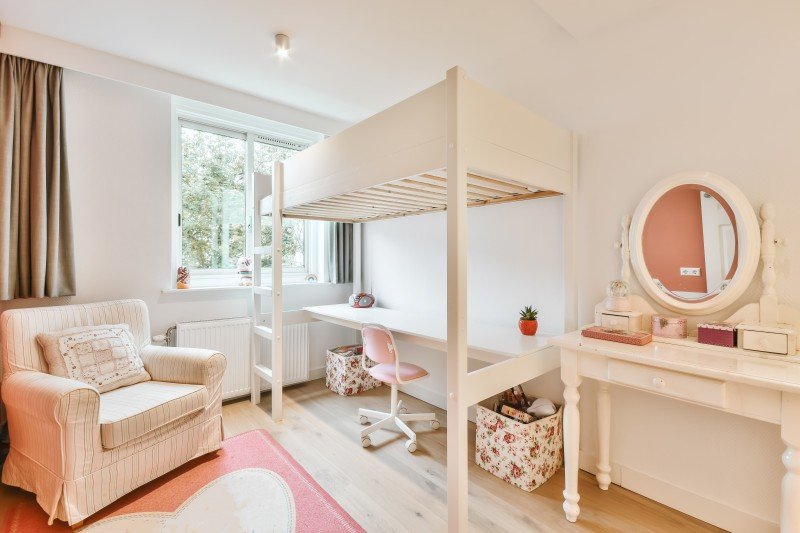Guide To Bunk Beds: The Intermediate Guide To Bunk Beds
페이지 정보
본문
Exploring Bunk Beds: A Comprehensive Guide
Bunk beds have actually long been a staple in children's bedrooms, dormitories, and even homes with minimal space. Not only do they offer a useful sleeping solution, however they also create a fun and imaginative environment for kids and a great space-saver for adults and families. This short article will check out whatever you require to know about bunk beds, from types and materials to safety pointers and purchasing guidance.
Tabulation
- Types of Bunk Beds
- Standard Bunk Beds
- Loft Beds
- Triple Bunk Beds
- L-Shaped Bunk Beds
- Material Options
- Wood
- Metal
- Security Considerations
- Buying Guide
- Frequently asked questions
Types of Bunk Beds
Bunk beds come in different styles to fit different needs and choices. Here's a breakdown of the most common types:
Conventional Bunk Beds
Standard bunks typically include 2 beds stacked vertically on top of one another. These beds are perfect for siblings sharing a room or for taking full advantage of sleeping space in guest spaces.
Loft Beds
Loft beds stand likewise to traditional bunk beds however do not have a lower sleeping area. Rather, they typically incorporate a desk or seating area beneath, making them a great choice for little spaces requiring multifunctionality.
Triple Bunk Beds
Triple bunk beds are designed for 3 occupants, with beds stacked in a three-tier setup. These are less common however can be a fun service for large households or slumber parties.
L-Shaped Bunk Beds
With one bed placed horizontally and the other vertically, L-shaped bunk beds are typically geared up with additional features such as desks or storage drawers and can match corner areas in a space.
Contrast of Bunk Bed Types
| Bed Type | Perfect Use | Description |
|---|---|---|
| Conventional | Shared bedrooms or guest spaces | 2 beds stacked vertically |
| Loft | Small spaces requiring multi-purpose space | Upper bed with open space beneath |
| Triple | Big families or slumber parties | Three beds stacked vertically |
| L-Shaped | Corner or versatile areas | A mix of vertical and horizontal beds |
Product Options
Bunk beds are produced from various products, with wood and metal being the most typical. Each product has its advantages and disadvantages.
Wood
- Sturdiness: Generally robust and can endure years of use.
- Visual Appeal: Offers a classic look that can blend with different decorations.
- Weight Capacity: Typically stronger; can support heavier weights.
- Disadvantages: May be more pricey than metal options and can be susceptible to scratches.
Metal
- Sturdiness: Generally lightweight and simple to move but still strong.
- Modern Design: Often can be found in sleek designs, making it appealing for contemporary areas.
- Economical: Usually more economical than wooden alternatives.
- Downsides: Can be cold to the touch in winter seasons and may not have the very same aesthetic appeal for some buyers.
Security Considerations
When it concerns bunk beds, security can not be overlooked. Here are essential security ideas to bear in mind:
- Guardrails: Ensure that the leading bunk has guardrails on both sides to avoid falls.
- Durable Construction: Check for a solid construct and durable materials to withstand weight and movement.
- Weight Limit: Adhere to the producer's weight limitation for both the upper and lower bunks.
- Ladder Design: Choose bunks with a safe, easy-to-climb ladder and prevent any sharp edges or rungs.
- Age Restrictions: Most producers recommend that children under the age of six ought to not sleep in the upper bunk.
Buying Guide
When searching for bunk beds, consider the following factors to discover the best fit for your needs:
- Space Availability: Measure the space size and ceiling height, ensuring there is adequate space for the leading bunk.
- Bed Size: Decide in between twin, full, or bigger sizes based upon your requirements and the size of the space.
- Style Preference: Consider the total decor of the bed room to find a suitable style.
- Ease of Setup: Look for a bunk bed that is uncomplicated to put together.
- Spending plan: Bunk beds are available in numerous rate ranges, so identify a budget before beginning your search.
Frequently asked questions
1. What is the advised age for children to sleep on the top bunk?
Kids aged six and older are typically suggested to sleep on the leading bunk to reduce the danger of falls.
2. How can I make my bunk bed safer?
To boost security, ensure guardrails are effectively set up and inspect that the bed is put on a flat surface area. In addition, motivate children to use the ladder carefully.
3. Can I convert a bunk bed into 2 separate beds?
Lots of bunk beds are developed to be convertible. Check the producer's requirements for convertibility functions.
4. What devices are offered for bunk beds?
Common devices consist of beddings, storage drawers, staircases rather of ladders, and tented canopies for a fun visual appeal.
5. How do I keep my bunk bed?
Routine look for loose screws or structural stability can help ensure safety. Dust the bed routinely and clean spills immediately to keep the products in good condition.
Bunk beds are flexible and a space-efficient service for various living situations, from kids's rooms to guest accommodations. With lots of designs and materials offered, possible buyers have a wealth of options to consider, guaranteeing a combination of functionality and visual appeals. By prioritizing safety and following the suggestions described in this guide, individuals can find the right bunk bed that fits their space and way of life, all while creating a satisfying sleeping environment.

-
- 이전글
- POVKOREA주소ネ 직시 (1080p_26k)POVKOREA주소ネ #hvu
- 25.07.08
-
- 다음글
- POVKOREA 주소ネ 직시 (1080p_26k)POVKOREA 주소ネ #hvu
- 25.07.08


